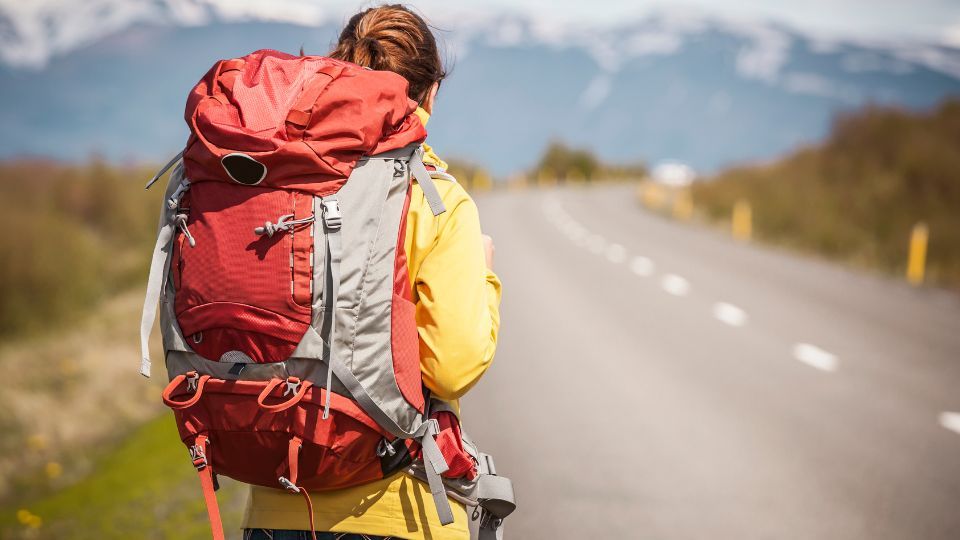
Where Should A Backpack Sit On Your Back?
If you have back pain in Baltimore, Maryland, then the first step should be to reach out to a back pain doctor. The specialists at Ascension St. Agnes can help you understand the nature of your spine pain.
With compassion and attention to detail, we’ll help you treat your pain so that you can enjoy pain-free movement once again. That being said, it helps to understand some preventative measures in the meantime.
If you would like to hike or wear a backpack, then it’s easy to simply sling it over your shoulder and get to walking. However, you may not be aware that backpacks can actually cause pain in your back, shoulders, and neck.
So, let’s talk about good backpack habits to keep in mind. That way, you can ultimately reduce your level of pain going forward.
How To Properly Wear A Backpack?
A lot of people with back pain in Baltimore end up asking “where should a backpack sit on your back?” This is one of the most essential parts of limiting back pain. But there are other factors to consider, like:
A Backpack That Fits
Make sure your backpack is properly suited to your specific body type. Both shoulder straps should be used instead of slinging over one shoulder. This may take another moment, but it can help you over the long run.
Use Any Waist Or Chest Straps That Are Available With The Backpack
This ultimately distributes the weight across a wider area of your body. This relieves shoulder pressure. It also keeps the backpack from swaying and throwing you off balance.
Adjust The Shoulder Straps So That They’re High Up On Your Back
If it extends past your waist, then this could cause acute pressure on muscles, ligaments, and joints and other areas of your body. Ultimately you want to keep the backpack from swaying from side to side. Maintaining proper balance is key.
The Weight Of Your Backpack
When it comes to how to wear a backpack properly, the weight matters also. Try to reduce the weight of your backpack as much as possible. Ultimately it shouldn’t be more than 10% of your body weight.
So for instance if you weigh 170 pounds then 17 pounds would be the maximum. If you’re going on a multi-day hike then you may need to pack a little bit more. Still try to keep it under 20% of your body weight when it’s completely filled.
You can use hiking boots and trekking poles to help distribute the weight as well. Ultimately also you want to build up. So if you’re not used to carrying more than 30 pounds per say you wouldn’t want to throw on more weight than that.
The point is to build up to the weight that you’re going for. And if at any point you experience back pain, visit a doctor.
Children Guidelines
Children should follow the same tips above that adults use, like avoiding a backpack on one shoulder. In other words, use both straps, tighten it up and try to keep the weight between 10 and 20% of the body weight.
Also try to organize the backpack items near the center of the pack. This reduces swaying.
Tips For Buying Everyday Backpacks
When looking for an everyday backpack consider the following factors.
Width
You don’t want the backpack to be wider than your torso. If you can see it’s extending out of the sides then it’s probably too wide.
Straps
Aim for adjustable straps. A hip belt is something that helps as well.
Torso Length
You want the backpack to sit around 2 inches below your shoulder. It should end at your waist. If it extends past your hips by more than a few inches then it could be too long and cause additional back strain.
The same tips go for hiking packs as well. If you’re going on multi-day treks you want to make sure the torso length doesn’t extend very long past your hips. Hip belts and shoulder straps should be a given.
You should be able to tighten the backpack so it almost becomes a second part of your body rather than swaying around and causing unnecessary strain on the back.
Heal Your Back Pain In Baltimore
When you contact Ascension St. Agnes today, you’ll be connected with excellent patient resources. Our compassionate doctors will analyze your back pain and help you get in peak physical condition.
This will involve mechanics, stretching, sleep, medication, and even surgery. No matter what the best treatment for you is, we’ll provide you with comprehensive medical knowledge. That way, you’re not limited in doing anything that you want for your lifestyle freedom.